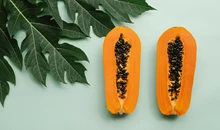
January is a busy month in the garden, no matter where you live. Whatever your gardening passion is—vegetables, flowers, shrubs, and trees— it’s time to put on your gardening gloves and get to work. Here’s your guide on what to do in your garden in January:
In the flower garden:
As long as the ground isn't frozen, you can plant bare-root roses, shrubs, hedges, and decorative trees.
Take cuttings of perennials with succulent roots, such as Verbascum, acanthus, and oriental poppies.
Buy plants that are in bloom so that you can select the most beautiful blossoms, then establish fresh colonies of snowdrops and hellebores.
Remove and compost any perennial stems that are soaked and collapsed.
Cut hardwood branches from deciduous bushes like forsythia, willow, and viburnum.
To prevent the spread of the leaf spot disease, remove and discard any hellebore foliage that has black spots.
To start your own mistletoe plants, press mistletoe berries into apple tree bark.
Verify that wind-blown debris, such as falling leaves, doesn't smother small alpines.
Regularly deadhead winter pansies and other bedding plants, and take out any foliage that has downy mildew on it.
Relocate dormant plants to better locations if they are currently there.
In the fruits and vegetable garden:
During the winter, prune apple and pear trees to remove any sick, dead, or damaged branches.
Sort your seeds, discarding any that are empty or past their prime, and marking those that you need to purchase for the upcoming season.
Plan your crop rotation so that you can grow each type of crop in a different bed from the one you used in the previous year.
Redcurrants and gooseberries should be pruned, with side shoots being clipped back to three buds from the base.
Clean up the vegetable plot of old crops and weeds, and then turn the soil while incorporating compost.
examine stored crops frequently, getting rid of any that exhibit decay or deterioration.
If the ground isn't frozen, plant bare-root fruit shrubs, trees, and canes in enriched soil.
Make sure netting is in place to protect brassicas from pigeons, such as kale, Brussels sprouts, and cabbage.
Cover the plants with a bucket or clay pot to force an early yield of sensitive long stems from rhubarb plants.
To promote foliage development, feed spring cabbages with high-nitrogen feed.
If you haven't previously, prune blackcurrants, removing around a quarter of the old stems.
For planting in the spring, place a seed potato, onion, shallot, and garlic bulb order.
In the greenhouse:
For harvests within a few weeks, sow winter salads in a greenhouse, conservatory, or on a sunny windowsill.
Clean up the greenhouse by getting rid of any broken pots, outdated compost, or other clutter that could hide intruders.
Put strawberry plants in pots under protection to promote early fruiting.
Overwintering plants should be periodically inspected for pests such as aphids, mealybugs, and other insects.
To prevent leaf curl disease, bring potted peaches inside the greenhouse.
Place potted hippeastrum (amaryllis) on a warm windowsill.
Install a thermostatically controlled electric fan heater to prevent the greenhouse from being frosty.
To promote early flowering, place potted camellias in an unheated porch or greenhouse.
Plant perennial cuttings in compost with good drainage after rooting them, such as phlox and Japanese anemones.
Start planting hardy annual seeds in modular trays for early blooms, such as cornflower, cerinthe, and ammi.
Make your greenhouse's ventilation, shading, and heating better in time for spring.
If moth orchids appear to be on the verge of bursting out of their pot after flowering, repot them.
On bright days, ventilate the greenhouse to prevent humidity buildup.
Tips on how to Maintain Your Garden in January:
Fill bird baths up with new water each day, and on chilly days, melt ice in them with warm water.
During dry seasons, fix shaky or damaged fences and apply preservatives to wooden buildings.
While it's not in use, perform a basic service on your lawn mower or have it serviced at a dealer.
Set up birdhouses well in advance of the start of the nesting season in protected locations on tree trunks, sheds, or walls.
Hoes, secateurs, and shears should all be cleaned and sharpened, and metal tools should be sprayed with oil.
Spread an all-purpose fertilizer around shrubs and at the base of hedges.
Before birds begin to nest, remove ivy, Virginia creeper, and other climbers that have outgrown their area.
To assist birds to survive the winter, provide them with high-energy food.
Remove moss, algae, and wet leaves off steps, decking, and patios.
Dig over any border gaps to get rid of perennial weeds' roots.
In preparation for the start of the planting season, thoroughly clean empty pots and seed trays. Remove debris from shed and greenhouse guttering so that winter rain can fill your water tanks
Regularly empty and clean bird feeders to maintain hygiene











